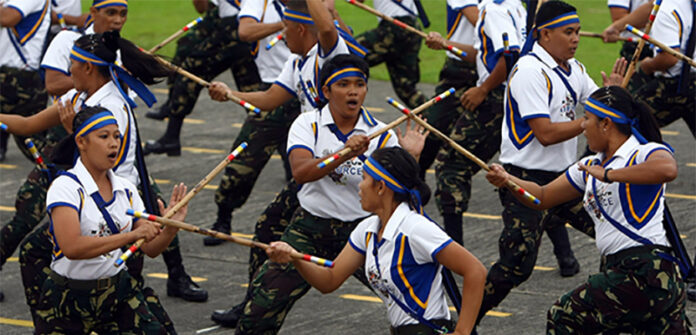The Filipino Martial Arts (FMA) are weapons-based fighting systems that originate from natural movements assumed to be those of indigenous Philippine tribes and are evolving according to perceived demands of its present audience/practitioners. “Arnis” and “escrima” are Spanish-derived words which are understood to be the more immediate progenitors of FMA. There are also ancient influences from Silat, Indian and Chinese systems with Spanish influence being the most significant in the whole country except for some remote mountainous regions.
The traditional names “arnis” and “escrima” derive from Spanish terminology – “arnis” evolved from the Spanish word “arnes,” referring to the harness on which the armor was hung in preparation for battle. “Escrima” is also a derivative from the Spanish derivative from the Spanish-derived word “esgrima,” meaning fencing.
Because the prevalent training tool and actual street weapon for arnis practitioners has been rattan sticks or hardwood batons. When steel blunts are used for practice, it has been fashionable to call these movements “kalis,” the Malay word for sword (still in use by many tribes in the Philippines today). “Kalis” means the “keris, kris” which is phonetically derived from the Turkish “kilij” meaning sword. The term “kalis” is noted in many of the Spanish dictionaries of the Spanish colonial period to mean the sword, fighting with the sword or practicing with the sword.
While many practitioners today use the term kali, this term was introduced to Filipino martial arts in the 1970s. Leo Gaje introduced his system to North America after arriving in the US in 1972. Dan Inosanto also played a significant role in promoting this terminology.
Arnis was taught within Filipino communities until the late 1960s, the breakthrough came in the late 1960s-1970s when Filipino masters began teaching outside their communities, combined with Hollywood exposure and the practical appeal of weapons-based training for military and law enforcement applications. The connection to Bruce Lee through Dan Inosanto was particularly significant.
Today’s FMA maintains its traditional weapons-based foundation while adapting to modern training methods and competitive formats. It’s recognized both as a cultural heritage and a practical martial art system used by military, law enforcement, and civilian practitioners worldwide.
Defensive Knives Part 5 PDF
Defensive-Knives-Part-5Defensive Knives for Urban Environments Part 1
Defensive Knives for Urban Environments Part 2
Defensive Knives for Urban Environments Part 3
Defensive Knives for Urban Environments Part 4


